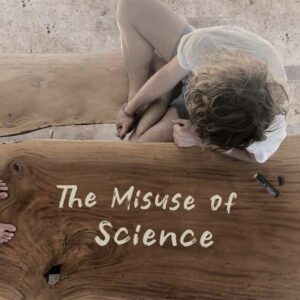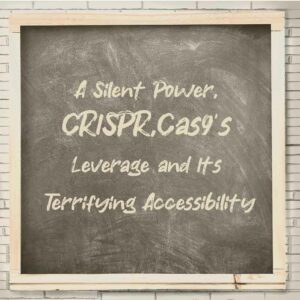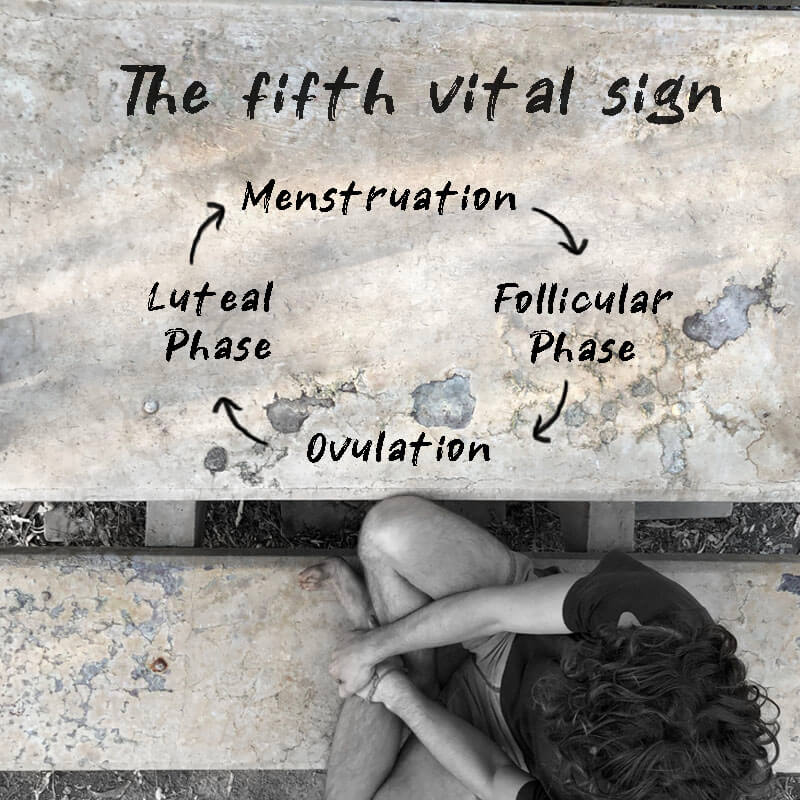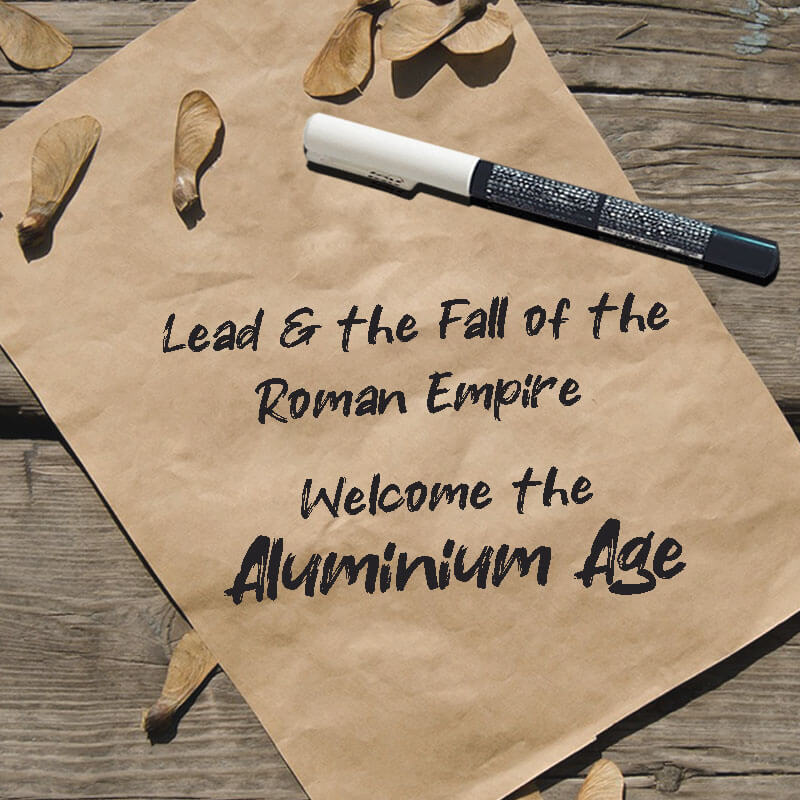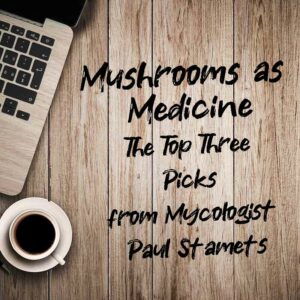It’s not often I research something and have a profound realisation. Encountering Chris Exley’s research has been a truly eye-opening experience for me, leading to a profound realisation about the significance of his work. The depth and impact of his investigations into aluminium and its potential effects on human health are genuinely remarkable. Thus, this article is a much longer read than my typical article.
Chris Exley’s work on aluminium biogeochemistry delves into the intricate details of aluminium’s interaction with biological systems, particularly its potential role in neurodegenerative diseases, immunological responses, and oncogenesis. His thorough investigations have generated novel insights into aluminium’s potential health impacts, while also sparking debate among researchers. In this article, we provide a deep look at Exley’s most significant findings.
We are in the ‘Aluminium age’. Aluminium has never really been bioavailable to any organism until human intervention over the last century or so. We’ve entered peculiar and unprecedented territory.
Aluminium and Silicon: A Unique Relationship
Aluminium and silicon, two of the most abundant elements in the Earth’s crust, share a unique relationship in the realm of bioinorganic chemistry. While aluminium is often associated with potential toxicity, silicon has been found to counteract some of the detrimental effects of aluminium on biological systems. The presence of silicon in the form of soluble orthosilicic acid ‘Si(OH)4’ can form stable, non-toxic hydroxyaluminosilicate complexes with aluminium ions, which dissolve so slowly that the aluminium is almost never released and almost never makes its way into the biotic cycle.
How Aluminium Became Part of the Biotic Cycle
The increased bioavailability of aluminium in the environment and its subsequent integration into the biotic cycle can be largely attributed to human activities. While aluminium is naturally abundant in the Earth’s crust, it primarily exists in insoluble forms, such as bauxite, which limits its interaction with living organisms. However, human activities like mining, industrial processes, and the burning of fossil fuels have led to the release of soluble aluminium compounds into the environment, significantly increasing its presence in soil, water, and air. As a result, aluminium has become more readily incorporated into the food chain, impacting a wide range of organisms, including humans.
We are all living in a science experiment. Aluminium is now in the biotic cycle. And so, it’s accumulated in our brains and in other tissues. It is also physically and chemically biologically reactive. That means it will react with virtually everything it comes into contact with, including biological molecules.
A Formative Experience: Exley’s Scientific Roots
Chris Exley’s scientific roots can be traced back to his early fascination with the natural world and the role of metals in biological systems. One formative experience that shaped his research interests was the study of the environmental phenomenon of acid rain in the 1980s. Acid rain emerged as a significant environmental concern, leading to widespread damage to forests and aquatic ecosystems. Exley was particularly intrigued by the connection between acid rain and aluminium toxicity in fish populations, as acid rain mobilised aluminium from the surrounding soil, making it more bioavailable to aquatic life, causing detrimental effects on fish populations and delicate ecosystems.
During his investigations, Exley noticed the protective benefits of orthosilicic acid in water. Orthosilicic acid, a soluble form of silicon, can bind with aluminium ions to form stable, non-toxic hydroxyaluminosilicate complexes, thereby reducing the bioavailability of aluminium and its potential harm to aquatic organisms. This discovery of the unique relationship between aluminium and silicon served as a foundation for Exley’s future research endeavours, ultimately guiding his focus on understanding the intricate relationship between aluminium, silicon, and human health.
Some experts suggest lead poisoning may have played a significant role in the decline of the Roman Empire. Consider the ‘Aluminium Age’.
Lead and the Fall of the Roman Empire
The fall of the Roman Empire has been attributed to numerous factors, and one of them is the widespread use of lead in the Roman society. Lead was extensively used for various purposes, such as water pipes, kitchenware, and even as a sweetening agent in wine. Over time, the chronic exposure to lead caused a plethora of health issues, including cognitive decline, reproductive problems, and various neurological disorders. Some historians and experts argue that the widespread lead poisoning contributed to the decline in the overall health of the Roman population, leading to weakened leadership, poor decision-making, and a less robust military force, all of which played a role in the fall of the empire.
Are We on a Similar Trajectory with Aluminium Toxicity?
Drawing parallels to Chris Exley’s work on aluminium and neurodegeneration, one could argue that modern society might be on a similar trajectory with aluminium toxicity. Aluminium is ubiquitous in our daily lives, found in our diet, drinking water, cosmetics, cookware, and even vaccines. Like lead, aluminium is a neurotoxin, and its accumulation in the body can lead to various neurological disorders, including Alzheimer’s disease and autism.
Exley’s research has highlighted the significant presence of aluminium in the brains of individuals with Alzheimer’s disease and autism, suggesting a potential link between aluminium exposure and these conditions. As we become more aware of the potential risks associated with aluminium exposure, it is crucial to take action to mitigate these risks, much like how societies eventually recognised the dangers of lead poisoning and took measures to limit its use.
“My concern is: do we need to be concerned about the arrival of something which is highly biologically reactive for the first time in biochemical evolution?”
The Various Routes of Aluminium Exposure
Human exposure to aluminium occurs through a variety of sources due to its ubiquitous (and now bioavailable) presence in the environment. Some of the most common sources of aluminium exposure include diet (from fruits, vegetables, grains, meats, and processed foods), infant formula, drinking water, cosmetics (such as antiperspirants and makeup), cookware (like aluminium pots, pans, and foil), food packaging (cans, foil, and baking trays), vaccinations (as an adjuvant), medications (antacids and buffered aspirin), and environmental pollution (industrial processes, mining, and aviation and vehicle emissions). These everyday items and practices contribute to the aluminium burden in our bodies, making it essential to understand the potential health implications associated with the metal and the ways to mitigate its impact.
Excretion of Aluminium
Recent research has suggested that our bodies may excrete more aluminium through sweat than through urine, which is surprising and fascinating. However, this area is still being studied, and more research is needed to fully understand how aluminium is eliminated from the body. Along with sweat and urine, aluminium is also excreted through faeces (making up approximately 70-90% of ingested aluminium), as well as through the skin, nails, and hair. It has also been detected in semen and is likely present in menstrual blood as well.
Nature’s solution: drinking water naturally high in orthosilicic acid (silicon). Look for concentration: 30 mg/L or 30ppm
The Protective Effects of Mineral Water with Orthosilicic Acid (Silicon)
In Chris Exley’s research, he has extensively studied the protective effects of orthosilicic acid against aluminium toxicity. Orthosilicic acid is a naturally occurring compound found in some drinking water sources, and it has the unique ability to bind with aluminium. Exley’s work demonstrates that when orthosilicic acid is present, it forms complexes with aluminium, reducing the metal’s bioavailability and preventing its absorption by the body. It is effective in removing stored aluminum from the body.. This process effectively reduces the potential for aluminium toxicity and its associated health risks. By promoting the consumption of water rich in orthosilicic acid or supplementing with orthosilicic acid, individuals may be able to mitigate the harmful effects of aluminium exposure and protect their overall health.
Exley recommends a minimum concentration of 30 mg/L or 30ppm of orthosilicic acid (written as ‘silica’ on the label) in mineral water and suggests drinking 1L per day on an ongoing basis. Personally, just intuitively, I would prefer not to consume this water every day, in case it binds to essential minerals like iron and creates other deficiencies. For this reason, I plan to cycle my intake of orthosilicic acid periodically.
Consuming imported and bottled water feels wrong to me, but I’m empathetic towards those battling illness. It seems counterintuitive to solve a problem with the same unintended consequences that I seek to resolve – more pollution. Thus, I’ve been searching for a source in Australia. So far, I have found that the town of Moree, NSW, has artesian mineral springs flowing at 22mg/L silica and the town of Hepburn Springs, VIC has 64mg/L silica. That’s where I plan to get my water from. Exley suggests avoiding supplementation as the supplements are like “sand in a bottle”. However, I have found supplements containing Monomethylsilanetriol MMST (Potassium Salt), which claim to break down into orthosilicic acid – the brand I have chosen for my needs is ‘BioTrace Bioactive Silica’. I’m confident that my needs will be met through occasional trips to Hepburn Springs, consumption of silicon-rich foods like brown rice and barley, and supplementation with MMST. Additionally, I’m pleased to discover that beer typically contains about 20mg/l of dietary silicon.
Testing
Although Exley doesn’t really provide public advice on how to test for aluminium, I believe we could approach it similarly to heavy metal testing. Comparison testing (Tri-test) and a provoked metal challenge using water containing orthosilicic acid as the chelator, I believe, would be the most effective testing methods.
Comparison testing (Tri-test): This involves testing blood, hair, and urine to determine aluminium levels and their mobilisation throughout the body.
A provoked metal challenge: This method (borrowed from heavy metal testing) involves administering a chelator (possibly soluble silica water in this case), to provoke the release of stored metals. Thereafter, urine is collected for the next 6-24 hours depending on the protocol followed. This is essential for testing long-term exposure rather than just acute exposure (exposure in the past three months).
Therapeutic Trial: Although not technically testing, in some cases, it may be appropriate to start a safe therapy as a way to diagnose a medical condition. This approach is known as a therapeutic trial. In this case, drinking soluble silica water is a very safe treatment and may be an effective means of determining if aluminium burden is affecting your well-being. Consider therapeutic trail as a means of indirect testing for aluminium burden.
In extreme cases, a tissue biopsy may be performed to measure aluminium levels directly in specific tissues, such as the brain, liver, or bone. This is an invasive procedure and is reserved for extreme cases where a definitive diagnosis is needed.
Chris Exley | Del Bigtree of The Highwire interviews Prof. Christopher Exley
Chris Exley | Aluminium Research Group: AutismOne Conference Featuring
*
Alright, now let’s get into the saucy stuff.
*
Aluminium’s Role In Autism
Aluminium’s role in autism has become a subject of increasing interest and investigation in recent years. The study “Aluminium in brain tissue in autism” published in the Journal of Trace Elements in Medicine and Biology in 2018 by Chris Exley is profound.
- Vast Quantities of Aluminium Found In Post-mortem Brains
In the aforementioned study, researchers discovered “ridiculously high amounts quantitatively” of aluminium in the brain tissue of individuals with autism. What was particularly interesting was not only the vast quantity but the location of the aluminium deposits. This finding has gained the attention of many scientists around the world and led to further investigation into the potential role of aluminium exposure in the development or exacerbation of autism spectrum disorder (ASD).
- Aluminium Found in the Glial Cells of the Brain (the ‘housekeeping’ cells)
The significance in terms of location is that the aluminium was found primarily in the glial cells of the brain, which are responsible for maintaining the brain’s health and function. Glial cells play a crucial role in the immune response and the maintenance of the blood-brain barrier. The presence of aluminium in these cells raises questions about its potential impact on the brain’s immune system and overall health. The glial cells are heavily implicated in autism because they are involved in a process known as synaptic pruning – a process of synapse elimination.
“So when you’ve got the cells that are responsible for doing that [synaptic pruning] full of aluminium and therefore not as viable or working as well as they should be, you start to think ‘well this is a little bit interesting’, now we have not just quantitative analyses of aluminium but we have it in locations and associated with certain cells and cell types which are immediately relevant to the autism spectrum disorder”
- Significant Exposure: Vaccinations and the Scandal of Aluminium in Infant Formula
Exley’s research highlights a concerning finding: every infant formula tested contained notable aluminium, with some containing significant amounts up to 700μg/L. Alarmingly, the formulas designed for preterm babies exhibited the highest aluminium levels. This is particularly concerning because infants do not have a choice in what they consume and possess a limited ability to detoxify. Factors such as a ‘not fully developed’ gut, blood-brain barrier, and kidneys in infants further exacerbate the potential risks associated with aluminium exposure. Then there’s the frequency and quantity of vaccinations, the majority of which use an aluminium adjuvant. .It’s difficult to decipher the excretion capability of an infant because there isn’t a lot of data available but it’s suggested that the excretion capabilities of an infant may be considerably disproportionate to that of an adult due to less sweat and urine output.
Regressive Autism: A Theory of Mechanism
We know that aluminum is deposited in the glial cells of the brains of autistic individuals. If we can discover how and why it gets there, particularly if it gets there quickly, it may provide insight into the role of vaccines in acute aluminum toxic exposure and further confirm aluminum’s role in autism. Chris Exley poses the question: could a small exposure in the wrong way be gravely problematic? He suggests a compelling theory of a mechanism that has yet to be thoroughly studied.
When considering aluminum’s role in acute toxicity and regressive autism, we must consider three things: how aluminum reacts in the body, its translocatability to the brain, and the speed at which large amounts can deposit in the brain.
To understand aluminium’s role in Regressive Autism we need to understand: how aluminum reacts in the body, its translocatability to the brain, and the speed at which large amounts can deposit in the brain
How Aluminium Reacts in the Body
Aluminium adjuvants play a critical role in vaccines, not by binding with the antigen, but rather by creating a toxic burden that attracts an immune response. Responding immune cells then arrive at the injection site and recognise the intended antigen that has been injected. Acute toxicity of aluminium is rare, although there is growing evidence that it may be playing a role in vaccine death. Some instances of acute toxicity, although rare, have been reported during dialysis.
Adjuvant: Creating Novel Allergies
Austrian researchers have demonstrated that using aluminium, they can create allergies to many novel things. In their study, they induced allergies to cod in rats. This raises several questions: Can a vaccine make us allergic to contaminants, other ingredients, or even our own cells present at the injection site? Furthermore, what determines whether aluminium acts as an adjuvant, and could it have the same effect from other sources within our body?”
An Antigen:
Israeli researchers have shown that they can create antibodies to aluminium, suggesting that aluminium can behave as an antigen in the human body. This raises the question of what factors determine whether aluminium acts as an antigen and whether this could occur with aluminium from other sources within our body.
Acute Toxicity:
Acute aluminium toxicity is rare in humans, but there have been cases of people experiencing severe intoxication. One example is dialysis encephalopathy, which occurred when patients receiving dialysis were exposed to tap water containing significant concentrations of aluminium. Unaware of the aluminium content in the tap water, medical professionals used it for dialysis, allowing aluminium to pass through the dialysis membrane and enter the bloodstream. The aluminium then accumulated in the brain, causing massive neuron loss and leading to death or severe disability in some patients.
“We looked at the relationship between asthma and the use of antacids in children.” “We were able to show, definite, some sort of, you know, inconclusive but relationship between children who took antacids and some sort of diagnosis of asthma.” Referring to unpublished work using the General Practice Research Database to make comparison.
Translocation to the Brain
In Exley’s research, he discusses the potential translocation of aluminium to the brain, as demonstrated by a fellow researcher’s work. This researcher showed images of macrophages, which are immune cells, that had differentiated and taken up aluminium adjuvant from vaccines into their cytoplasm. These macrophages were loaded with aluminium and remained viable for at least 24 hours, appearing to function normally despite their aluminium content. According to Exley, these macrophages could be among those that travel to the brain, potentially transporting their aluminium load to the brain and contributing to the accumulation of this metal in brain tissue.
Speed in Which it can Recruit Aluminium to the Deposit Site – Glial
Due to the complexity of the scientific details, I have included verbatim commentary from one of Exley’s interviews to accurately convey his perspective on this topic:
“So when you’ve got the cells that are responsible for doing that [synaptic pruning] full of aluminium and therefore not as viable or working as well as they should be, you start to think ‘well this is a little bit interesting’, now we have not just quantitative analyses of aluminium but we have it in locations and associated with certain cells and cell types which are immediately relevant to the autism spectrum disorder.”
“some macrophages that she had differentiated, that had taken up aluminium adjuvant from vaccines into their cytoplasm, they had loaded themselves up with it, and so far, she has been able to show that they remain viable for at least, at least, 24 hours.“
“Perhaps, add to that, there was evidence that.. you see, let’s say a small insult occurs in the brain of some sort, a small, tiny little ischemic reaction or some shock or something of that sort, to produce a minor inflammation. The brain has its own ways of dealing with that internally but it can also signal to the periphery – to the rest of the body – for help. And well, if it does that it asks other inflammatory type cells, the white blood cell type, to come, go into the brain and help out. Our, again, microscopy work looked like, very clearly to us, we had images of inflammatory cells looking like they were crossing the blood brain barrier, coming from the outside to the inside. In other words, cells that had picked up a load of aluminium in the periphery – in the body somewhere – were full of aluminium and were passing into the brain. Probably because they were responding to a signalling mechanism ‘asking for help’“.
“She showed [referring to a fellow researcher] some images of some macrophages that she had differentiated, that had taken up aluminium adjuvant from vaccines into their cytoplasm, they had loaded themselves up with it, and so far, she has been able to show that they remain viable for at least, at least, 24 hours. Full of aluminium. The cell seems to work perfectly normally. And that particular macrophage could easily be one of the ones that goes off to the brain and takes that load of aluminium to the brain. So, we have a mechanism now, whereby, significant amounts of aluminium picked up by immunoreactive pro-inflammatory cells at injection sites of vaccines can take large amounts of aluminium directly into brain tissue [this can be happening in days, weeks, months].”
“So, we have a mechanism now, whereby, significant amounts of aluminium picked up by immunoreactive pro-inflammatory cells at injection sites of vaccines can take large amounts of aluminium directly into brain tissue.” – referring to theory of mechanism.
More About Aluminium Adjuvants
Chris Exley’s states that two specific types of aluminium adjuvants, aluminium oxyhydroxide and aluminium hydroxyphosphate, are used in a majority of all vaccines – an estimated 90% of all vaccines. These adjuvants play a crucial role in enabling the immune response to the vaccine’s antigen, making the vaccine more effective in protecting against the targeted disease.
Aluminium oxyhydroxide: Also known as aluminium hydroxide, this adjuvant is one of the most frequently used forms of aluminium in vaccines. Vaccines containing aluminium oxyhydroxide include those for hepatitis A and B, diphtheria-tetanus-pertussis (DTaP), and Haemophilus influenzae type b (Hib).
Aluminium hydroxyphosphate: This adjuvant is another widely used form of aluminium in vaccines. It is an aluminium salt of phosphoric acid. Vaccines containing aluminium hydroxyphosphate include pneumococcal conjugate and some inactivated polio vaccines.
Exley notes that aluminium oxyhydroxide has a more crystalline structure, as opposed to aluminium hydroxyphosphate, which is more amorphous. The distinction between the two is significant because they behave differently in the body. Amorphous structures generally change more quickly than crystalline ones, which may indicate how rapidly aluminium (reactive aluminium cation Al3+) is released.
Due to its faster-changing structure, the amorphous adjuvant is more likely to cause an adverse reaction at the injection site, which is why it seems to be less prioritised by pharmaceutical companies in vaccines. Exley theorises that the crystalline adjuvant may be more likely to be translocated around the body because of its slower release of aluminium. So, the adjuvant that produces a less noticeable adverse reaction may indeed be the more dangerous form. It’s pertinent I note that these are Exley’s theories, and further research is necessary to confirm these notions.
Amorphous Aluminum Hydroxyphosphate Sulfate:
Chris mentions that the adjuvant used in HPV vaccines is proprietary: amorphous aluminum hydroxyphosphate sulfate (AAHS). This adjuvant is used in the Gardasil and Gardasil 9 HPV vaccines. Exley says that he requested this adjuvant be made available to his lab for his studies; however, Merck & Co. were uncooperative. This is a major concern for scientific integrity, as the control of materials used in a study prevents peer review. Exley’s work has raised concerns about the potential neurotoxic effects of aluminium adjuvants, as well as their possible role in autoimmune and inflammatory disorders.
Aluminium and Neurodegenerative Diseases
The research by Chris Exley explores the possible link between aluminium and brain diseases like Alzheimer’s. The focus is on how aluminium builds up in the brain and what impact this could have on the disease’s development.
One key element of Alzheimer’s is the build-up of certain plaques in the brain, which disrupts normal function. Exley’s research suggests that aluminium could encourage the formation of these plaques. Another important aspect of Alzheimer’s is tangled proteins within brain cells, affecting their proper functioning. Aluminium may play a role in this process as well.
“We know that individuals who are immunocompromised, whether through disease or medical intervention, carry a higher body burden of aluminium. We are currently running a trial on multiple sclerosis [MS] and we know that individuals with MS have a higher body burden of aluminium than we would expect.“
Additionally, Exley’s studies have indicated that people who have compromised immune systems may have higher levels of aluminium in their bodies. Current studies are exploring the link between aluminium levels and conditions like multiple sclerosis. Overall, Exley’s work shines a light on the potential influence of aluminium on Alzheimer’s, from plaque formation to cell dysfunction, raising important questions for future research.

Nils Strohbeck
Connect
A Perfect Coup: Pharmaceutical Industry’s Hold on Healthcare
A dive into industry's extensive influence
Lead and the Fall of the Roman Empire: Welcome the ‘Aluminium Age’
How Aluminium is Affecting Our Health

